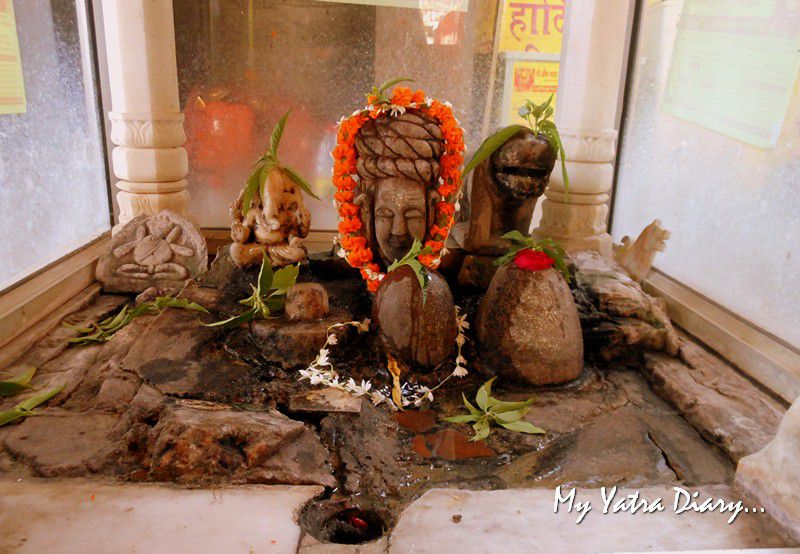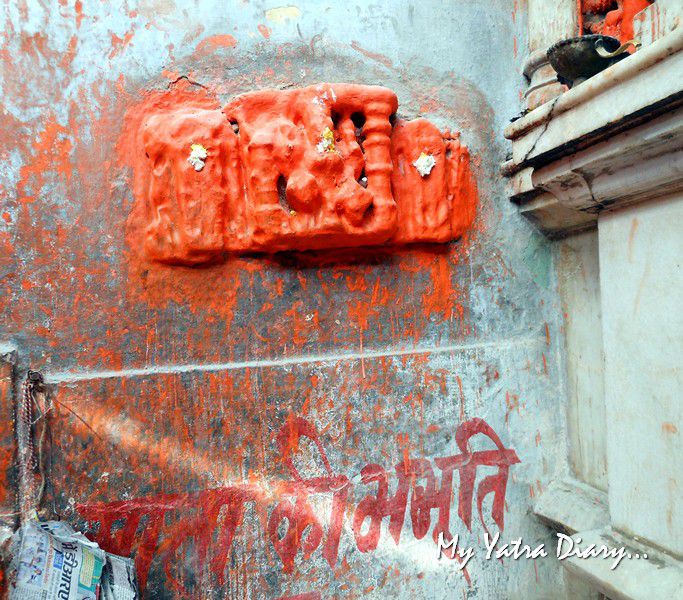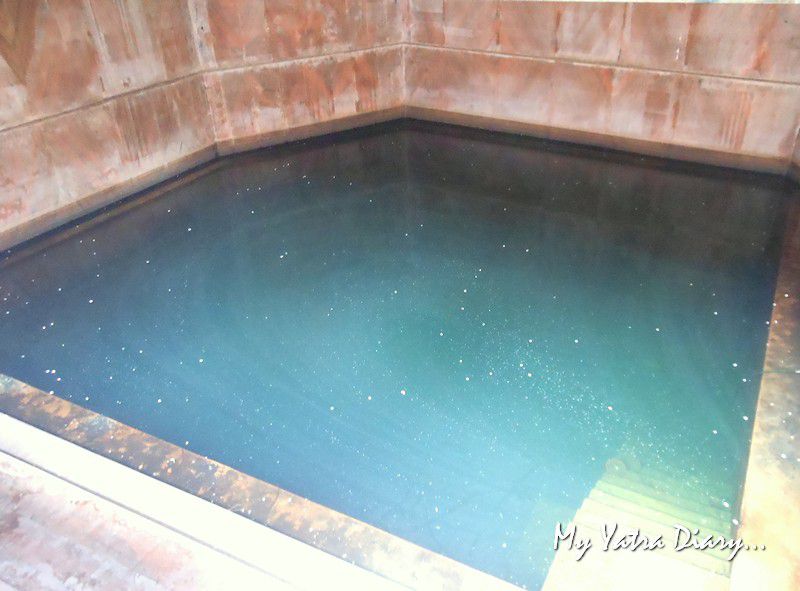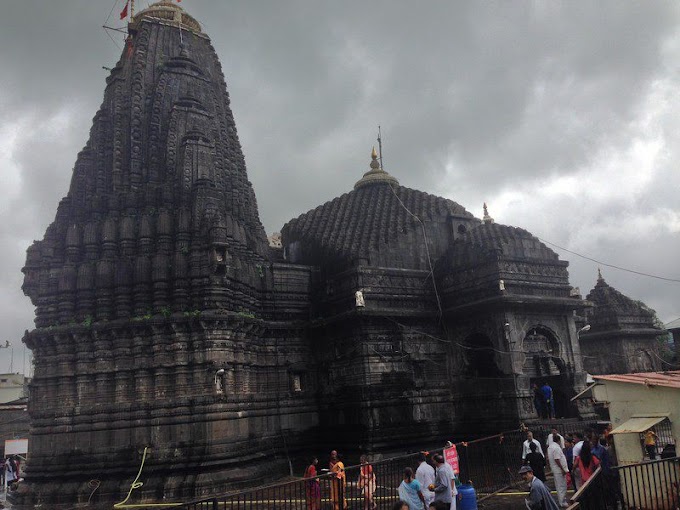India is a land where women have been revered as the embodiment of ultimate strength, Goddess Shakti since times immemorial. Her innate wisdom, intuitive knowledge, distinctive sixth sense, the courage to speak her truth and honor her experiences are just some of the many treasures gifted to her by the cosmos bestowing a divinity that is not only sacred but when applied, also very powerful. She is worshipped as Durga, Devi, Mother, Ma, Mata in her various avatars of Goddesses (viz. Shailaputri, Brahmacharini, Chandraghanta, Kushmanda, Skandamata, Katyayani, Kaalratri, Mahagauri, Siddhidhatri, Mahalakshmi) all over the country and what is truly astonishing is that each form or Goddess avatar has her own unique character infusing life, charm and personality in the ancient temples of India.
Jeen Mata Mandir – Shakti Sthal or The Seat of Power in Rewasa, Sikar District, Rajasthan.
One such fascinating and ancient Devi temple is located in a small village, 10 km. from Rewasa and around 110 km from Jaipur, amid the Aravali hills on the road leading to the famous Khatu Shyam ji Temple in the Sikar district of Rajasthan.
Seated as the Goddess of power and an avatar of Goddess Durga, Jeen Mata is the patron deity or kul devi of the Yadavas, Pandits, Rajputs, Agarwals, Baniyas, Jangirs and Meenas along with the Chauhans belonging to the Shekhawati area.
 |
| Image of Jeen Mata in the Jeen Mata Mandir (Image courtesy: Patrika.com) |
According to an inscription on the nearby Harsh Mountain, the temple was built in 12th century by Raja Mohil during the tenure of the great ruler Prithviraj Chauhan 1. Devotees come in huge numbers during the nine day festival of Navratri that falls in Ashwin and Chaitra months of the Hindu calendar to pay homage to the much acclaimed Goddess and seek her blessings for the future.
One glance at the legends and stories doing the rounds amidst the locals and there comes the epiphany: She’s one of those Goddesses who’s not easy to please…
The Brother-Sister Bond that Shines Through The Jeen Mata Temple.
Jeen Mata was born as Jayanti Mata in a Rajput family of the Chauhan dynasty in a village called Ghangu. She shared a special bond with her brother Harsh. One day, when she was out fetching water, she got into a heated discussion with her sister in law over who is more loved by her brother Harsh. Unable to come to a conclusion, it was decided that when they returned back to their village carrying water filled pots on their head, that person whose pitcher Harsh would remove first from their heads would be the winner of the debate.
Harsh removed her wife’s, Jeen Mata’s sister in law’s, pitcher first.
 |
| Way to the Jeen Mata Temple, Sikar District Rajasthan |
Jeenmata could not bear the pain of this act from her brother whom she loved so deeply. Defeated, disappointed and angry, she went to the Kajal peak of the Aravalli mountain range and sat down in meditation. When Harsh came to know about this, he went behind his sister to pacify her anger. But alas! Jeen Mata had made up her mind and refused to leave the mountain ranges which she now called home. Seeing this, Harsh followed suit and sat down in prayer of Baba Bhairavnath on a nearby mountain peak.
 |
| Entrance of the Jeen Mata Temple. |
In honor of Harsh, today stands a temple dedicated to Baba Bhairavnath on a peak nearby the Jeen Mata temple and both the temples together are celebrated as a testimony of the pure undying bond of love that exists between a brother and a sister.
The Renovated but Ancient Jeen Mata Temple / Jeen Mata Mandir.
Guarded by the magnificent Aravalli range on all sides, the temple paints a picture of peace and tranquility poised gracefully amid excellent natural scenery, picturesque hills and tall trees. Red flags fluttering on the top of the temple shikhara give it a divine cosmic feel. A fleet of stairs on the Kajal peak lead to the main temple room which is supported by 24 beautiful pillars carved with figurines on them.
 |
| Steps leading to the Jeen Mata Temple in Sikar |
 |
| Main temple hall in the Jeen Mata Shaktisthal, Sikar Rajasthan |
The temple interior, made of high quality white marble and limestone, has a modern look owing to the continuous renovation work by the authorities but what is good to see is that the installed deities retain their ancient charm. There are deities of Lord Shiva, Lord Bhairav and Lord Hanuman on all the sides of the temple along with the eight armed swayumbhu or self manifested deity of Mata Jeen - a personification of Mahishasur Mardini Ma Durga.
 |
| Deity of Lord Hanuman inside the temple |
 |
| Lord Shiva Family at the ancient Jeen Mata Temple in Rajasthan |
 |
| Ancient Shiva temple inside the Jeen Mata Mandir |
 |
| Deity of Bhairon Devta in the main temple hall |
 |
| Can you see Jeen Mata through the bangles offered by a devout? |
 |
| Aromatic bliss wafting from incense sticks |
The temple holds an important religious significance and is very famous among the locals and pilgrims alike who come from different parts of the country in large numbers all around the year, and especially during the Hindu calendar months of Chaithra (March-April) and Ashwin (September-October) to celebrate the nine days of the festival Navratri with much pomp and gaiety. People have great faith and trust in the miraculous powers of Mata Jeen to protect them from all evil and bequeath them with good. The belief is so strong that it extends its roots in history to the Mughal era.
Mughal Emperor Auranzeb offered oil for the Akhand Diya to be forever lit in the Jeen Mata Temple.
It is said that once Mughal emperor Aurangzeb deployed his army to destroy the temple. The villagers pleaded the temple be spared but all their pleas went unheard. The villagers then turned to Jeen Mata as a last resort to save the temple. Interestingly, when the army proceeded to attack the temple soon after, a swarm of flies (bhairons) hit them, stopping the attackers dead in their tracks and forcing them to return to their King - empty-handed.
 |
| Sacred Ashes from the incense burnt for Jeen Mata |
Immediately after the incident, Aurangzeb fell critically ill. Feeling remorse for his misdeeds, he turned to Jeen Mata to ask forgiveness and pledged to offer oil to light ‘Akhand Jyoti’ (oil lamp which is always lit) in the sanctum sanctorum of the temple.
Pandavas Spent A Part of their 14 Years Exile Here.
One can see the akhand jyoti lit in the sanctum sanctorum even today. In the backside of the temple, there is an ancient Shiva cave temple, Mata ki dhuni which keeps burning, and a kund is which is unfortunately, not very well maintained.
 |
| Backside view of the Jeen Mata Temple |
 |
| Temple Kund. |
 |
| Mata Ki Dhuni which keeps burning 24*7 |
Besides the stench, the backside of the temple has an uncanny feel which is reminiscent of the past era. It is said that during their vanvass or exile of 14 years, the Pandavas spent a part of it in incognito in these forests and hills and renovated the temple to its existent look.
Fairs and Festivals Celebrated in The Jeen Mata Temple:
Jeen Mata Temple receives a continuous flow of pilgrims and devouts throughout the year but the flow is increased manifold during the festivals celebrated in the Mandir. A mela is held on the occasion of Durga Puja every year. Sharad Poornima Mahotsav, Chaitra navratri, Sinjara and Haryali teej, Harsh Bhairav fair and Ashvini navratri are the noted festivals celebrated with much zest and fervor.
 |
| Sitla Mata deity inside the temple premises. |
Families who worship the Mata as kul devi bring their male children to the temple for the Mundan sanskar (first hair removal custom) and married couples to seek blessings for their happiness and prosperity.
What are the Jeen Mata Mandir Temple Timings?
The temple opens at 4 in the morning and closes at 10 in the night during the summer season and 4.30 AM to 9.30 PM during the winters. The entry is free.
What are the arti timings of Jeen Mata Mandir?
Prayers are offered to the Jeen Mata thrice a day - 4 AM, 8 AM and 7 PM.
Is Jeen Mata Temple a Shaktipeeth?
Many people believe it to be a Shaktipeeth (momentous pilgrimage temples in India where Mata Sati's parts fell during Lord Shiva's tandav dance) but I could not verify the same. It is a Shaktisthal (place of intense power) but from my own research and what I read on the internet - there are no evidences of it being a Shaktipeeth.
------------------------------------- **** -------------------------------------
Found this post helpful?
PIN IT!







7 Comments
I haven't been to India yet, but this looks like a fascinating area to visit with a lot of history and religion behind it.
ReplyDeleteI always admire the amount of interesting content that goes into each and everyone of your Blog posts. Fascinating as always, thank you.
ReplyDeleteIndians temples are really amazing and the none can beat the architect style.
ReplyDeleteNice content. Bring more coverage for our indian pilgrimage places.
DeleteI didn't get any opportunity to visit India. But India place and temple was looking beautiful.
ReplyDeleteThanks For sharing this blog The temple looks very peaceful, and the history(about Brother and Sister) is very amazing to read.
ReplyDeleteVery nicely explained the extire journey. I also explore few more posts in this blog.
ReplyDeleteI loved the way you write.
Thanks for sharing this.
Delighted you stopped by... Your suggestions, feedback are really appreciated. Thanks a lot :) Hope you visit again!
If you have asked a question, please give me at least 2 days to reply back. Thank you :)